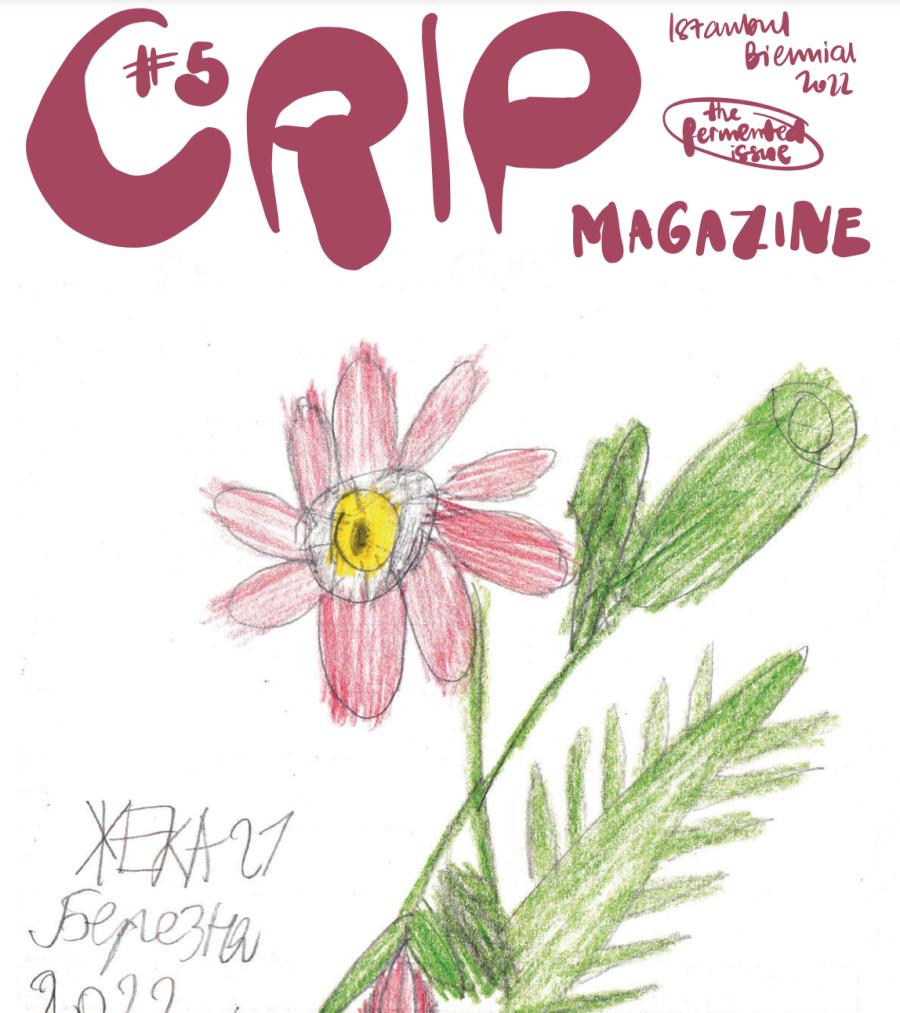"Non-compliance is a social skill" Mel Baggs (1980–2020)
"Non-compliance is a social skill" Mel Baggs (1980–2020)
It is normal and completely human to think and communicate in unconventional ways. Being human is a spectrum. Mel Baggs, autistic blogger, and activist.

It is an honor to feature some pieces from the latest issue Crip magazine by Eva Egermann for the Instabul Biennal 2022. Download issue 5 here
It is normal and completely human to think and communicate in unconventional ways. Being human is a spectrum. Mel Baggs, autistic blogger and activist, died of respiratory failure on 11 April, 2020, at the age of only 39. Hir work and engagement have influenced many people and have had a significant impact on current discourses surrounding the neurodiversity movement.
Amanda Melissa Baggs was born on 15 August, 1980 in Mountain View, California, and grew up surrounded by redwoods that subsequently inspired hir poems and watercolours. Having studied at De Anza College in California and Bard College in Massachusetts, sie then developed into an online activist.
One of hir blogs, for example, was ‘Ballastexistenz’ [Ballast Existence], which was named after a propaganda term used by the Nazis. According to Sarah Cavar, who spoke at the Society for Disability Studies Conference in 2021, these blog posts describe hir experiences in institutional care and the power of violent institutional actors, and analyze how violence is inscribed in the architecture of ‘care’. Baggs experienced the ‘total institution’, as the sociologist Erving Goffman put it. The institution is the narrative to which one is subjected. ‘They can write anything about you. And what they write can change what kind of manipulation and behavior programs you’re subject to, as well as take you out of your own home and put you in a group home or other institution.’ Baggs makes a similar point, describing hospitals or care facilities and institutional spaces as places of abuse and humiliation.
The 2007 video piece ‘In My Language’, which is perhaps hir best-known work, depicts the experience of living as a person with autism. The roughly nine-minute video has received over a million views online. Baggs dedicated this video to all those who are marginalized and excluded from society because of their allegedly unusual mode of communication, according to CNN. The video work sparked awe and ignited lengthy, heated discussions. Baggs’ work had a great influence on a wide range of artists and cultural workers. Mark Leckey, Wu Tsang and Simon Vera Harder have all cited hir works in their projects. ‘In My Language’ was displayed at the 2020 Berlin Biennale for Contemporary Art.
Baggs also posted poems and photos of hir cats Fey and Igor. She took the time to crochet gloves and scarves, which she left in plastic bags on park benches with a note that said: ‘If you are cold, please take these. I made them for you.’
Baggs’ life was marked by a constant will for autonomy and a striving to create conditions under which hir personhood/being human would not be denied. Hir invaluable critical work still has a transformative impact on our collective understanding of disability justice.
‘There is ableism somewhere at the heart of your oppression, no matter what your oppression might be.’ (Mel Baggs)
1 In hir post ‘Why I’d sometimes feel safer dying on a street corner than going to the hospital’,2
1 Mel Baggs, ‘They don’t even pretend about due process’, Cussin’ and Discussin’, 4 May 2018, https://
cussinanddiscussin.wordpress.com/2018/05/04/
they-dont-even-pretend-about-due-process/ (accessed 9 January 2022).
2 Mel Baggs, ‘Why I’d sometimes feel safer dying on a
street corner than going to the hospital’, Cussin’ and
Discussin’, 5 June 2018, https://cussinanddiscussin.
wordpress.com/2018/06/05/why-id-sometimesfeel-safer-dying-on-a-street-corner-than-going-tothe-hospital/ (accessed 9 January 2022)
-------------------------------------------------------------
About Crip Magazine
Crip Magazine is a self-published magazine project, released on an irregular basis. It draws from the history of the disability rights movement, with 80% of its contributors identifying as disabled. Drawing on the reclamation of the term crip (as in Crip Theory) that emerged within disability studies and activism in the 1970s, the magazine overturns the ableist and hyper-productive framing of bodies within capitalism. The project derived out of the motivation to create a common context.
Crip Magazine functions as a collective platform, gathering contributions by diverse cultural producers and artists. The Magazine is for free. It is accessible, free to download as accessible PDF. There are image descriptions to most contributions, the texts are printed in an accessible typeface and various formats (for e.g. screen readers) can be accessed. If you imagine the space of the magazine as a social space it is one where different affinities, alliances and neighbourhoods can take shape. It aims to not reproduce categorization and hierarchization along binarities, diagnosis, and status of ability.
The magazine started as an experiment and proposition for a Crip Culture magazine in the form of a broadsheet newspaper in 2012 in a self-organized and DIY manner.